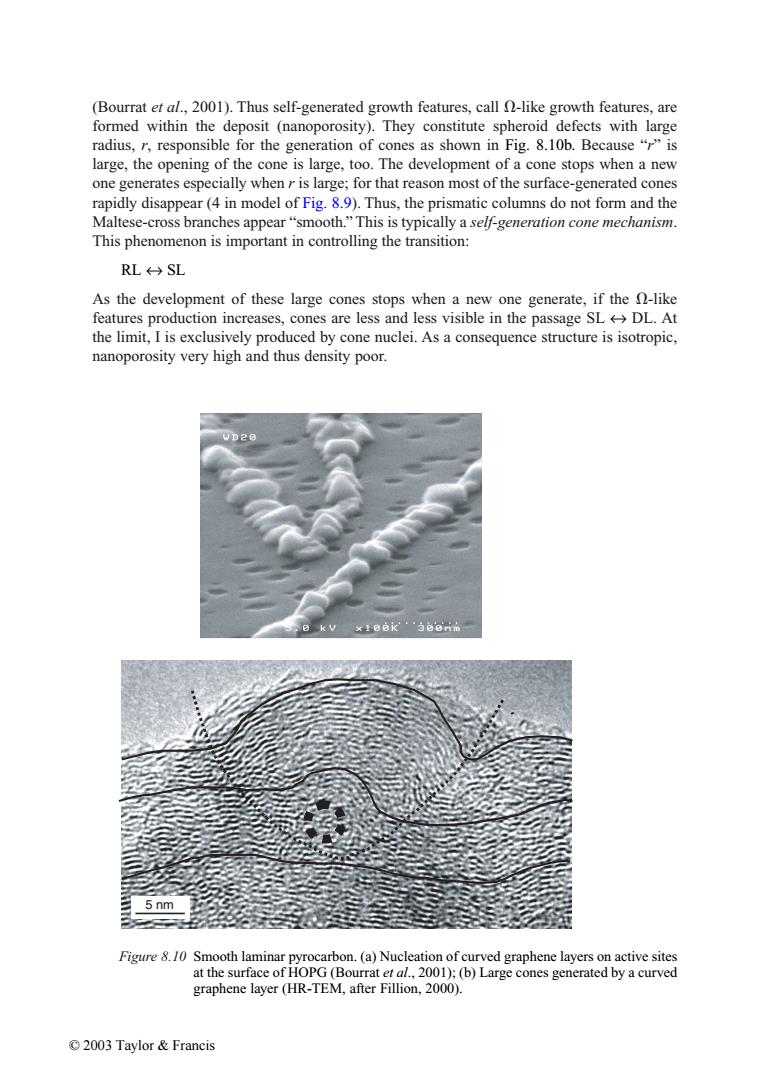正在加载图片...

(Bourrat et al.,2001).Thus self-generated growth features,call n-like growth features,are formed within the deposit (nanoporosity).They constitute spheroid defects with large radius,r,responsible for the generation of cones as shown in Fig.8.10b.Because "r"is large,the opening of the cone is large,too.The development of a cone stops when a new one generates especially when r is large;for that reason most of the surface-generated cones rapidly disappear(4 in model of Fig.8.9).Thus,the prismatic columns do not form and the Maltese-cross branches appear"smooth."This is typically a self-generation cone mechanism. This phenomenon is important in controlling the transition: RL←→SL As the development of these large cones stops when a new one generate,if the -like features production increases,cones are less and less visible in the passage SL>DL.At the limit,I is exclusively produced by cone nuclei.As a consequence structure is isotropic, nanoporosity very high and thus density poor. 0kV×1e8k·“3色8im 5nm Figure 8.10 Smooth laminar pyrocarbon.(a)Nucleation of curved graphene layers on active sites at the surface of HOPG(Bourrat et al.,2001);(b)Large cones generated by a curved graphene layer (HR-TEM,after Fillion,2000). 2003 Taylor Francis(Bourrat et al., 2001). Thus self-generated growth features, call -like growth features, are formed within the deposit (nanoporosity). They constitute spheroid defects with large radius, r, responsible for the generation of cones as shown in Fig. 8.10b. Because “r” is large, the opening of the cone is large, too. The development of a cone stops when a new one generates especially when r is large; for that reason most of the surface-generated cones rapidly disappear (4 in model of Fig. 8.9). Thus, the prismatic columns do not form and the Maltese-cross branches appear “smooth.” This is typically a self-generation cone mechanism. This phenomenon is important in controlling the transition: RL ↔ SL As the development of these large cones stops when a new one generate, if the -like features production increases, cones are less and less visible in the passage SL ↔ DL. At the limit, I is exclusively produced by cone nuclei. As a consequence structure is isotropic, nanoporosity very high and thus density poor. Figure 8.10 Smooth laminar pyrocarbon. (a) Nucleation of curved graphene layers on active sites at the surface of HOPG (Bourrat et al., 2001); (b) Large cones generated by a curved graphene layer (HR-TEM, after Fillion, 2000). 5 nm © 2003 Taylor & Francis